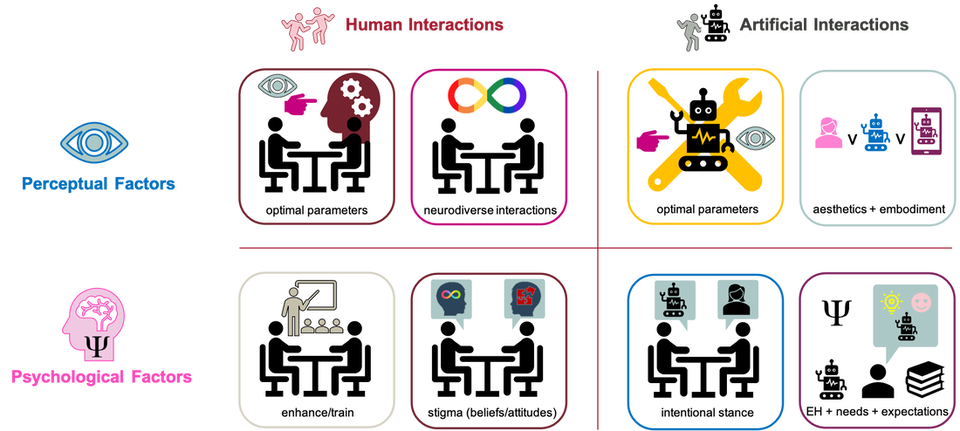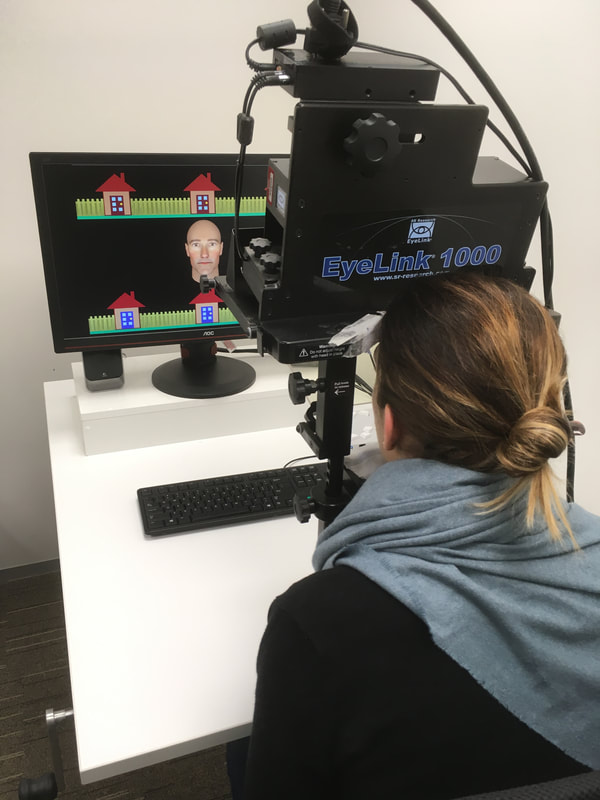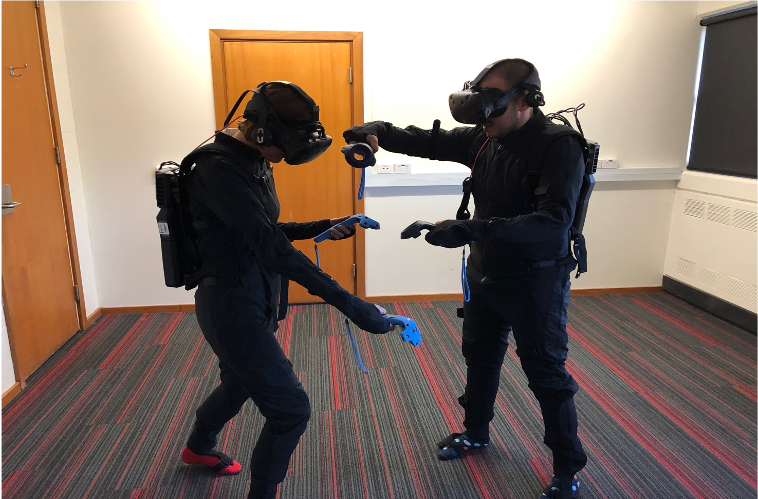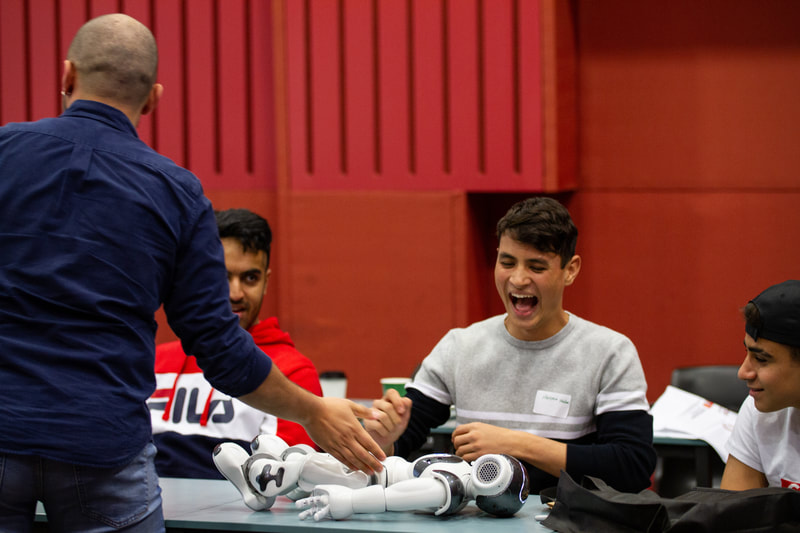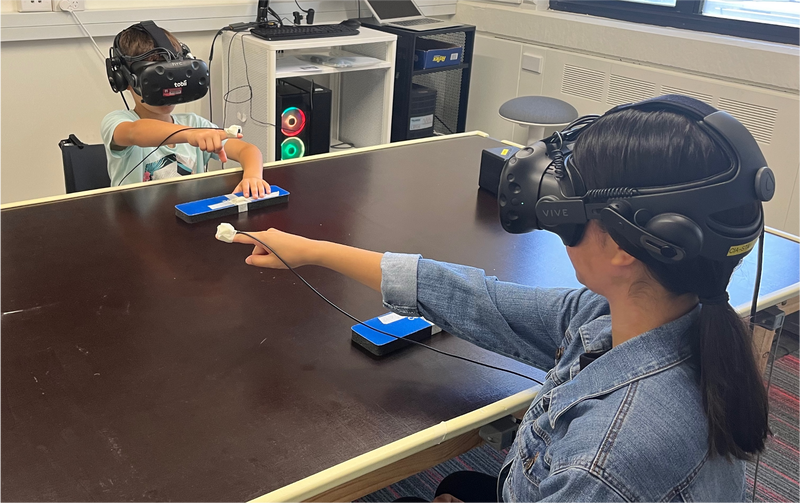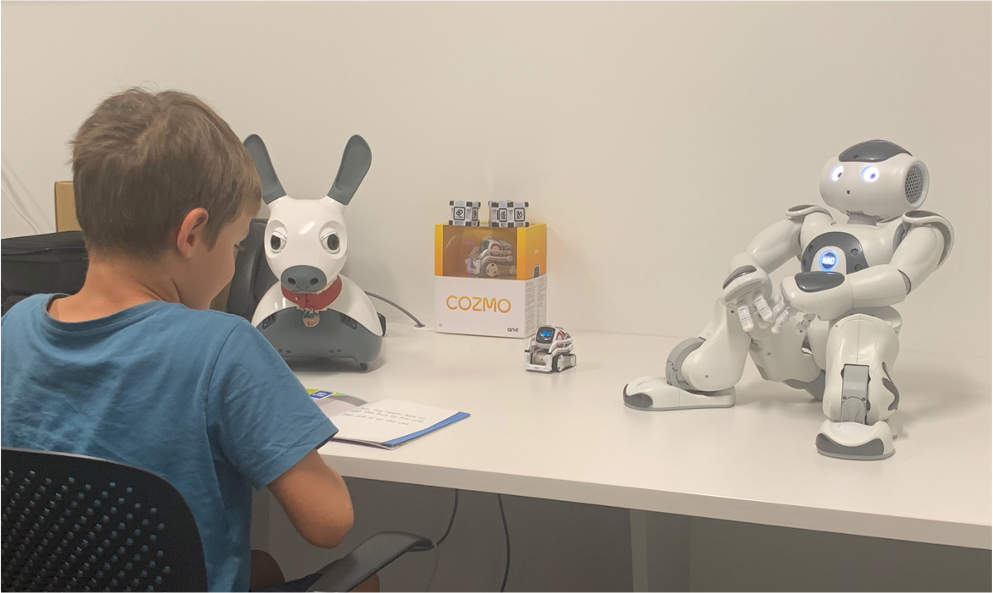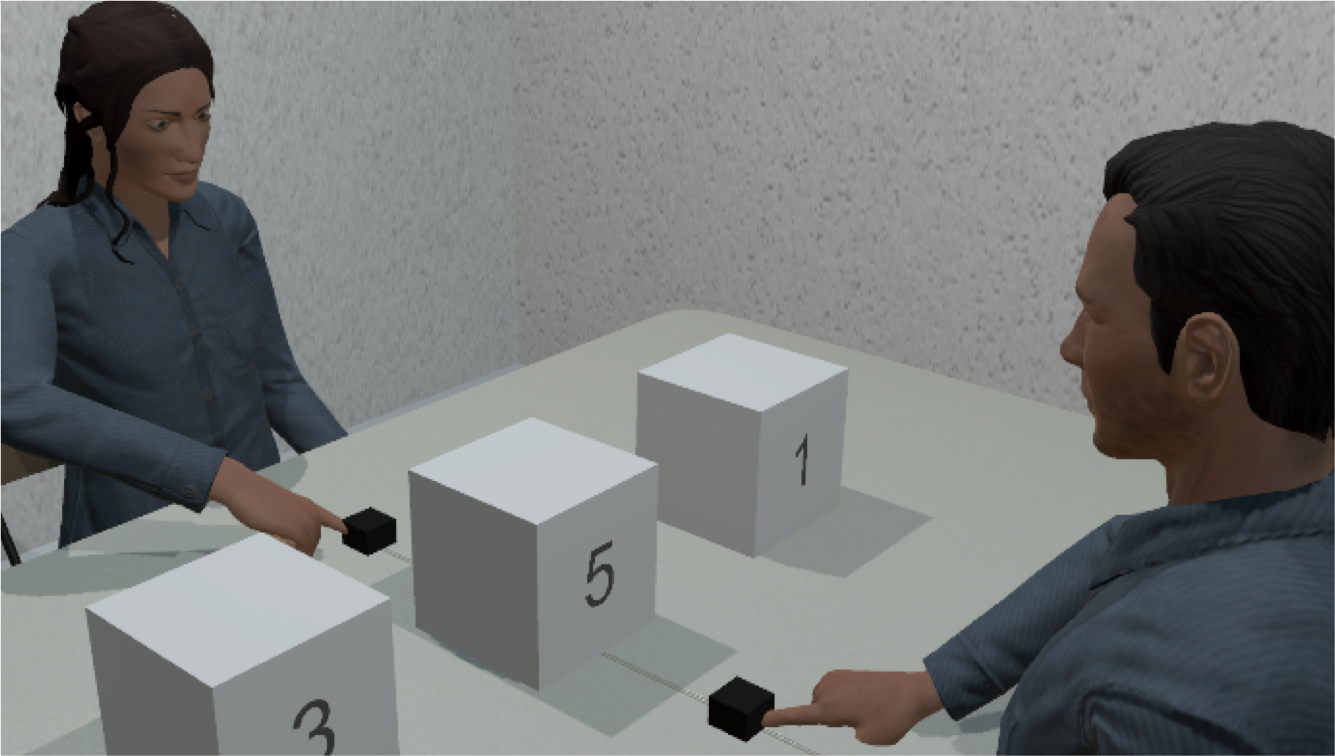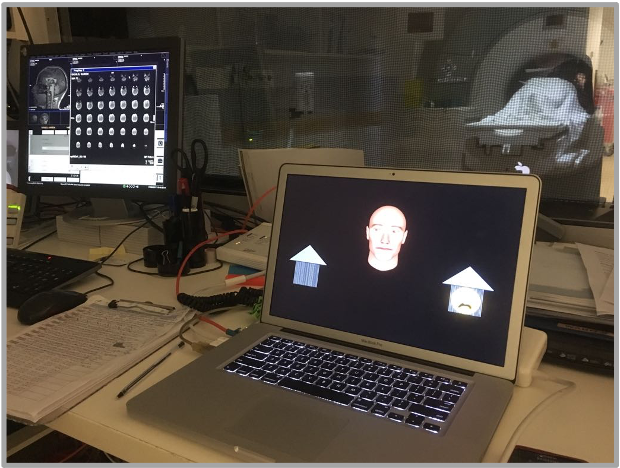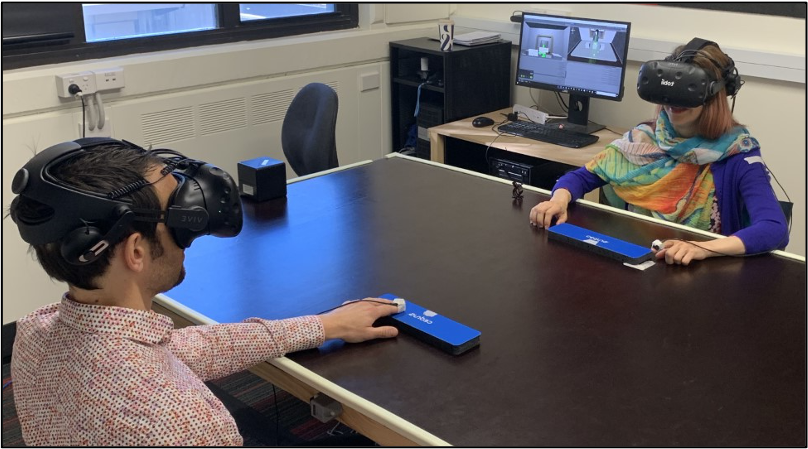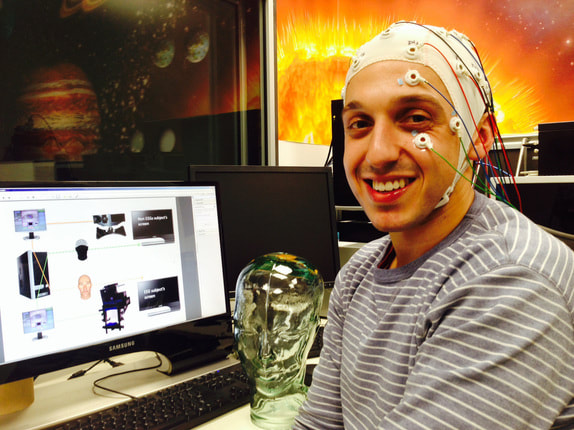I am a Senior Lecturer in Psychology at Flinders University and lead the HAVIC Lab for Human, Artificial & Virtual Interactive Cognition.
In my research, I use several methods to investigate the cognitive and neural processes that allow us to understand and interact with others. These include infrared eye-tracking, body tracking, immersive virtual reality, event-related potentials (ERPs) and functional magnetic resonance imaging (fMRI).
I am particularly interested in the perceptual (bottom-up) and psychological (top-down) factors that shape how we understand and use multiple non-verbal behaviours, including eye gaze and hand gestures, to coordinate our attention with others - a social function that we call "joint attention". This is a crucial social skill, because it allows us to share experiences with others, understand their visual and mental perspective, and learn socially during face-to-face interactions.
We currently know very little about joint attention because it occurs during dynamic interactions, which are hard to simulate and study in experimental settings. To overcome this challenge, I have been developing virtual interfaces that can be used to simulate realistic, compelling and controlled social interactions in the lab and in neuroimaging environments.
I am currently applying these techniques in a series of projects involving neurotypical and autistic children and adults. I also conduct studies with adults diagnosed with schizophrenia to understand the cause of difficulties that can often be experienced when evaluating social information displayed by others.
I hope that my research will advance our understanding of how the brain supports our capacity for social interaction, and why this may be difficult for some individuals with autism and schizophrenia. I provided an overview of this line of work in this article featured in Scientific American (see here).
In a newer program of research, our lab is also studying how humans perceive and interact with artificial agents (e.g., virtual characters and physical robots). Here we are interrogating the many factors - including our beliefs and expectations - that influence how we understand and interact with artificial agents. We are also examining whether these agents can be useful in educational settings.
In the interview below, I spoke briefly about my research program with the Academy of Social Sciences in Australia. You can hear me talk about my research in more detail here.
In my research, I use several methods to investigate the cognitive and neural processes that allow us to understand and interact with others. These include infrared eye-tracking, body tracking, immersive virtual reality, event-related potentials (ERPs) and functional magnetic resonance imaging (fMRI).
I am particularly interested in the perceptual (bottom-up) and psychological (top-down) factors that shape how we understand and use multiple non-verbal behaviours, including eye gaze and hand gestures, to coordinate our attention with others - a social function that we call "joint attention". This is a crucial social skill, because it allows us to share experiences with others, understand their visual and mental perspective, and learn socially during face-to-face interactions.
We currently know very little about joint attention because it occurs during dynamic interactions, which are hard to simulate and study in experimental settings. To overcome this challenge, I have been developing virtual interfaces that can be used to simulate realistic, compelling and controlled social interactions in the lab and in neuroimaging environments.
I am currently applying these techniques in a series of projects involving neurotypical and autistic children and adults. I also conduct studies with adults diagnosed with schizophrenia to understand the cause of difficulties that can often be experienced when evaluating social information displayed by others.
I hope that my research will advance our understanding of how the brain supports our capacity for social interaction, and why this may be difficult for some individuals with autism and schizophrenia. I provided an overview of this line of work in this article featured in Scientific American (see here).
In a newer program of research, our lab is also studying how humans perceive and interact with artificial agents (e.g., virtual characters and physical robots). Here we are interrogating the many factors - including our beliefs and expectations - that influence how we understand and interact with artificial agents. We are also examining whether these agents can be useful in educational settings.
In the interview below, I spoke briefly about my research program with the Academy of Social Sciences in Australia. You can hear me talk about my research in more detail here.
Research Program
My program involves four related streams of research focused on understanding the perceptual and psychological factors that contribute to positive social interactions between humans and with artificial agents across various contexts.
Gallery
Our research and outreach in action.

